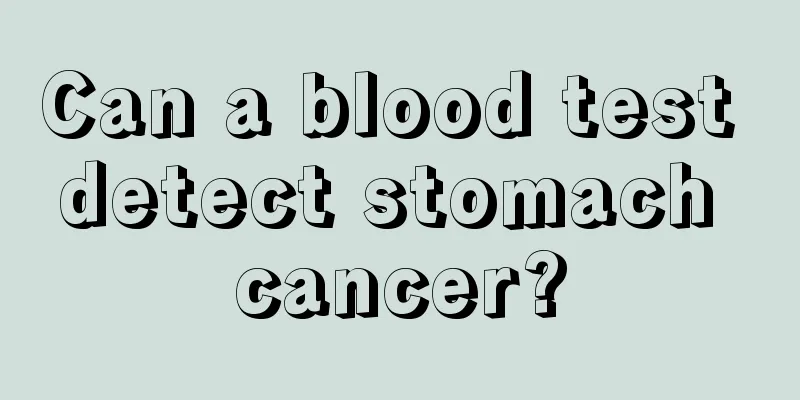It turns out that SARS has these symptoms

|
From a clinical perspective, infectious atypical pneumonia is a particularly serious disease. Once contracted, patients will not only have systemic symptoms such as chills, headaches, and muscle aches all over the body, but will also have respiratory diseases, which initially manifest as dry coughs. If not treated in time, adverse reactions such as chest tightness and shortness of breath may also occur. 1. SARS 1. Symptoms (1) Systemic symptoms: Fever is the most common initial symptom, accompanied by chills, shivering, headache, muscle and joint pains, and obvious fatigue. However, for the elderly, the weak, those with chronic underlying diseases or those who have undergone recent surgery, fever is not the first symptom. Some patients experience diarrhea, and severe cases may show corresponding clinical manifestations of heart, liver, and kidney function damage. (2) Respiratory system symptoms: Early symptoms include dry cough, or a small amount of white sputum, and occasionally blood in sputum. As the disease worsens, the patient gradually develops chest tightness, shortness of breath, and even obvious symptoms of respiratory distress, which cannot be relieved even with oxygen. Generally there are no upper respiratory tract catarrhal symptoms (nasal congestion, runny nose, etc.). 2. Physical signs Early lung signs are not obvious and are inconsistent with the chest X-ray findings. Often chest X-rays show extensive lesions in both lungs, but chest examination still shows no abnormalities. Some patients may hear a few dry or wet rales or signs of pulmonary consolidation by auscultation of the lungs. II. Treatment of SARS 1. Symptomatic supportive treatment (1) Rest in bed and avoid strenuous activities. (2) Fever: If the temperature exceeds 38°C, physical cooling (ice compress, alcohol bath) or antipyretic and analgesic drugs (aspirin should not be used in children) can be used. (3) Antitussive and expectorant drugs: used for those with severe cough or sputum, such as compound licorice mixture, ambroxol hydrochloride, etc. (4) Oxygen therapy: If you have shortness of breath, start oxygen therapy as soon as possible. Continuous oxygen inhalation through a nasal cannula or mask can be used to relieve hypoxia. (5) Nutritional support therapy: Due to energy consumption and difficulty in eating, patients often suffer from nutritional deficiencies, which affect recovery. Attention should be paid to adequate nutritional support and supplementation, which can be given through enteral or total parenteral nutrition, such as nasogastric feeding or intravenous route. The total calorie supply can be calculated as 83.7 to 104.6 kJ (20 to 25 kcal/kg) per kilogram of actual body weight per day, or according to the metabolic energy consumption formula [metabolic energy expenditure (HEE) = basal energy expenditure (BEE) × 1.26]. The distribution of nutrients is generally 40% sugar, 30% fat, and 30% protein. The amino acid intake is based on 1.0g per kilogram of body weight per day, and attention should be paid to supplementing fat-soluble and water-soluble vitamins. When patients develop ARDS, attention should be paid to water and electrolyte balance, combined with hemodynamic monitoring, reasonable infusion, and strict control of fluid replacement volume (25ml/kg body weight). The fluid intake and output should be required to show a slight negative balance, and crystalloid fluid should be the main fluid for fluid replacement. (6) Psychological treatment: Due to solitary isolation and serious illness, patients are often prone to loneliness, anxiety, panic and other psychological disorders, irritability or depression. They need warm attention and targeted psychological counseling treatment. 2. Glucocorticoids Early application of glucocorticoid therapy is beneficial to reduce lung immune damage, reduce the occurrence and development of hypoxemia and acute respiratory distress syndrome (ARDS), and can prevent and reduce the formation of pulmonary fibrosis. Most patients improve their poisoning symptoms and relieve high fever after taking the medicine. However, large-scale and long-term use of glucocorticoids may weaken the body's immunity, promote viral proliferation and reproduction, and cause triple infection (bacteria and fungi). Therefore, the rational use of hormones deserves further discussion. |
<<: What are the best ways to treat body odor
>>: These are the symptoms of atypical pneumonia! It will be too late if you don’t know!
Recommend
Notice! These 53 diseases do not require infusion!
The Anhui Provincial Health and Family Planning C...
Side effects of enhanced CT
When you do an X-ray or ultrasound in the hospita...
Urticaria causes and treatments
Urticaria is a common skin disease. Patients who ...
How is root canal treatment performed?
The quality of teeth is not only a person's a...
Pu'er tea foot bath
Pu'er tea is quite famous in China . Many peo...
The harm of not washing your face in the morning
The human skin needs to breathe. If you don’t was...
Small yellow spots and red bloodshot on the face
Many people may have encountered the phenomenon o...
What should I do if my blood viscosity is high?
Due to various reasons, more and more people nowa...
What are the treatment methods for blood deficiency
In fact, blood deficiency in the body poses a gre...
What does lung cancer carina mean
What does lung cancer carina mean? Lung cancer ca...
Onychomycosis and thickening of nail bed
Onychomycosis not only harms our body, but also a...
The cure rate of tongue cancer
Tongue cancer is quite common. It is not just a c...
The main early symptoms of gastric cancer
Among cancer diseases, gastric cancer is also ver...
Symptoms of heart valve insufficiency
The heart is an internal organ that plays an impo...
The head shakes unconsciously_The head shakes slightly unconsciously
Among many elderly people, the head shakes uncons...









